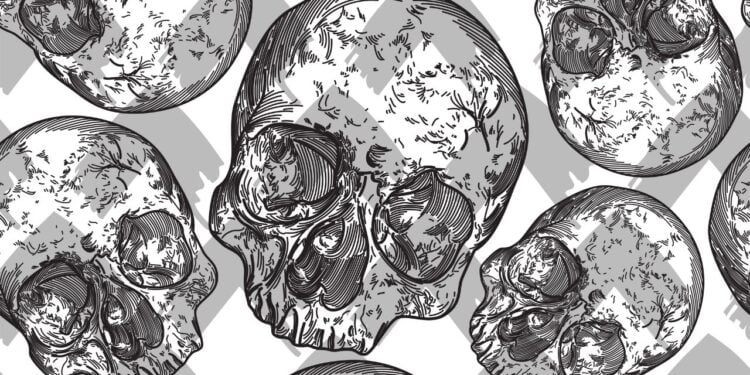- Emotional resonance, strategic insight, and ethical considerations are core aspects of design that AI struggles to replicate, underscoring the irreplaceable value of human designers.
- Generative AI can handle repetitive tasks and provide novel ideas, allowing designers to focus on more complex and creative projects, thus enhancing rather than replacing the profession.
- The future of graphic design will involve hybrid skills, where proficiency with AI tools will be as vital as traditional design expertise, leading to an evolved, rather than diminished, role for human designers.
The rapid advancement of generative AI technologies has undeniably transformed various sectors, including the field of graphic design.
The question arises: Is graphic design as a profession under threat? And, more critically, is generative AI a killer of creative jobs? It’s on a lot of people’s minds.
Nearly 70% of 4,000 global marketing and creative leaders are worried about the possibility of job losses across various industries due to AI advancements, according to a survey conducted by Canva.
To answer this concern, we need to explore both the capabilities of AI and the new role of graphic designers.
The Capabilities of Generative AI
Generative AI, especially models like OpenAI’s GPT-4 and image generators such as DALL-E and MidJourney, have made significant strides in replicating and even enhancing human creativity.
These models can produce high-quality images, designs, and even aesthetic content based on simple prompts. For instance, GPT-4 can generate coherent and contextually relevant textual content, while DALL-E can create intricate and diverse visuals.
Some specific examples of generative AI’s abilities include:
- DALL-E: Capable of generating images from textual descriptions, DALL-E can create novel visuals that might take a human designer hours to conceptualize and execute.
- MidJourney: Another platform allowing for the creation of detailed and creative visuals from textual prompts, often utilized by designers for inspiration and ideation.
- Adobe Sensei: Adobe’s AI module, which integrates machine learning into its Creative Cloud tools, automates mundane tasks, enhances design capabilities, and suggests design alternatives.
AI’s Impact on the Graphic Design Field
While AI tools are becoming increasingly sophisticated, the notion that graphic design is “dead” is an oversimplification.
The reality is more nuanced: AI tools can handle repetitive and time-consuming tasks, such as resizing images, color correction, and generating multiple design variations. Efficiencies like these allow designers to focus on more complex and creative aspects of their projects.
Additionally, AI-driven design tools provide accessibility to individuals without formal design training, enabling them to produce visually appealing content.
This democratization allows for a broader spectrum of creative expression but also raises concerns about market saturation and the devaluation of professional design services.
AI augments human creativity by providing novel ideas, patterns, and influences, allowing design professionals to experiment with unconventional styles and concepts they might not have explored otherwise.
Integrating AI into the design process should enhance efficiency, broaden participation, and open new creative horizons — rather than rendering the field obsolete.
The Human Element in Design
Graphic design is not solely about aesthetics; it encompasses understanding branding, psychology, cultural nuances, and client relationships. These human-centric aspects are difficult for AI to fully replicate:
- Emotional Resonance: Designers bring personal experience, empathy, and emotional intelligence to their work, producing designs that resonate on a deeper psychological level with audiences.
- Strategic Insight: Effective design requires strategic thinking, often involving interdisciplinary knowledge and an understanding of broader business goals.
- Ethical Considerations: Designers make ethical decisions about representation, inclusivity, and sustainability. While AI can be programmed with ethical guidelines, nuanced ethical judgments typically require human intervention.
“Human designers weave empathy into their work to evoke human emotions due to superior and authentic emotional intelligence. Secondly, they have unmatched creative agility. Humans can adapt their design strategy on the fly, tackle unforeseen challenges and tweak their creations based on nuanced feedback or even subtle shifts in their client’s tone,” according to one Forbes article.
The Future of Graphic Design Jobs
According to Goldman Sachs, generative AI has the potential to automate 26% of the tasks done by professional artists and designers.
“While AI-generated designs may lack the creative flair and uniqueness of human designers, they are sufficient for many basic design needs, putting entry-level graphic design jobs at risk,” according to Forbes.
The future will most likely see a shift toward hybrid skills where mastery of AI tools will be as important as traditional design skills.
On the topic of AI taking graphic design jobs, one user on the graphic design Reddit thread said “There’s been template websites and short cuts for a long time. If a person wants a cheap logo they can already get one. Hopefully, it just leaves the serious, well paying clients for the humans. And sure we can use AI as part of our workflow, it’s helpful.”
While AI may automate certain aspects of graphic design, the human touch, strategic thinking, and emotional connection remain irreplaceable components of creativity. As such, graphic design will continue to evolve and flourish in conjunction with AI advancements.
Indeed Hiring Lab Economist Nick Bunker said he thinks AI “will affect many, many jobs — maybe every job indirectly to some extent. But I don’t think it’s going to lead to, say, mass unemployment. We have seen other big technological events in our history, and those didn’t lead to a large rise in unemployment. Technology destroys but also creates. There will be new jobs that come about.”


 Dr. Gleb Tsipursky – The Office Whisperer
Dr. Gleb Tsipursky – The Office Whisperer Nirit Cohen – WorkFutures
Nirit Cohen – WorkFutures Angela Howard – Culture Expert
Angela Howard – Culture Expert Drew Jones – Design & Innovation
Drew Jones – Design & Innovation Jonathan Price – CRE & Flex Expert
Jonathan Price – CRE & Flex Expert













